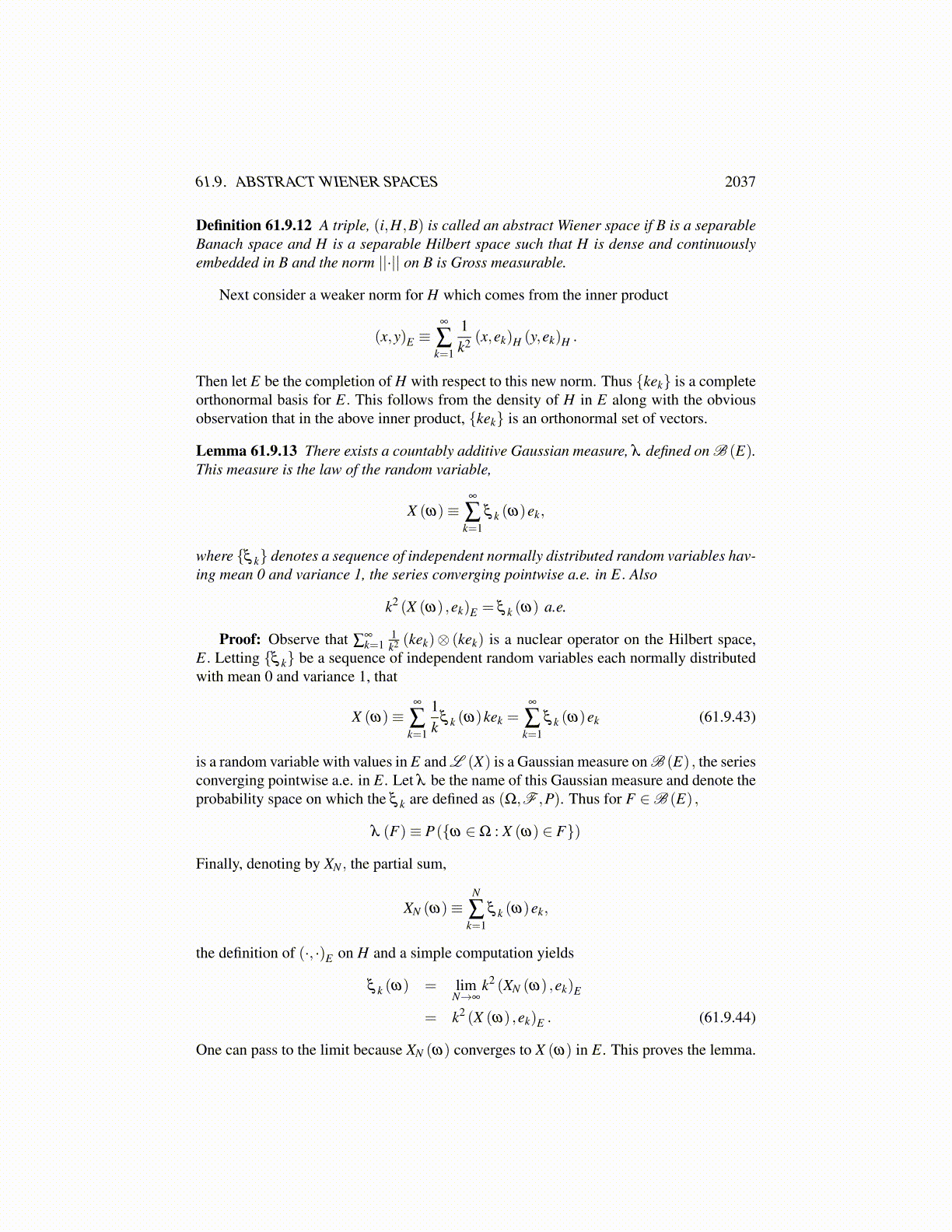
61.9. ABSTRACT WIENER SPACES 2037
and the lemma is proved. Therefore it can be assumed, there exists
en+1 ∈ span(e1, · · · ,en)⊥
such that |en+1|= 1 and ||en+1|| ≥ n+1.This constructs an orthonormal set of vectors, {ek} . Letting 0 < ε < 1
2 , it follows since||·|| is measurable, there exists Pε ∈F ({en}) such that if PPε = 0 where P ∈F ({en}) ,then
ν ({x ∈ H : ||Px||> ε})< ε.
Say Pε is the projection onto the span of finitely many of the ek, the last one being eN . Thenfor n > N and Pn the projection onto en, it follows Pε Pn = 0 and from the definition of ν ,
ε > ν ({x ∈ H : ||Pnx||> ε})= ν ({x ∈ H : |(x,en)| ||en+1||> ε})= ν ({x ∈ H : |(x,en)|> ε/ ||en+1||})≥ ν ({x ∈ H : |(x,en)|> ε/(n+1)})
>1√2π
∫∞
ε/(n+1)e−x2/2dx
which yields a contradiction for all n large enough. This proves the lemma.What are examples of Gross measurable norms defined on a separable Hilbert space,
H? The following lemma gives an important example.
Lemma 61.9.11 Let H be a separable Hilbert space and let A ∈ L2 (H,H) , a HilbertSchmidt operator. Thus A is a continuous linear operator with the property that for anyorthonormal set, {ek} ,
∞
∑k=1|Aek|2 < ∞.
Then define ||·|| by||x|| ≡ |Ax|H .
Then if ||·|| is a norm, it is measurable1.
Proof: Let {ek} be an orthonormal sequence. Let Pn denote the orthogonal projectiononto span(e1, · · · ,en) . Let ε > 0 be given. Since A is a Hilbert Schmidt operator, thereexists N such that
∞
∑k=N|Aek|2 < α
where α is chosen very small. In fact, α is chosen such that α < ε2/r2 where r is suffi-ciently large that
2√2π
∫∞
re−t2/2dt < ε. (61.9.42)
1If it is only a seminorm, it satisfies the same conditions.